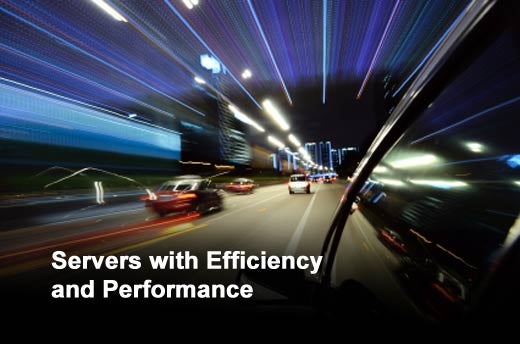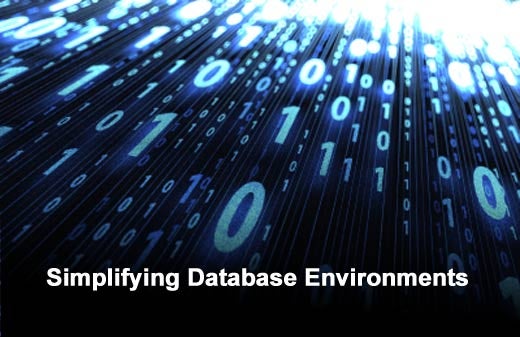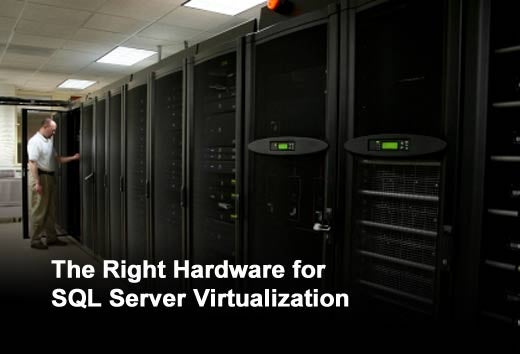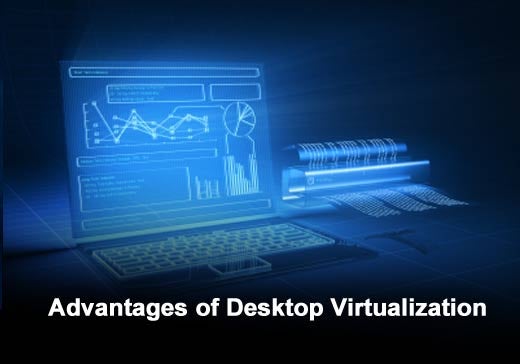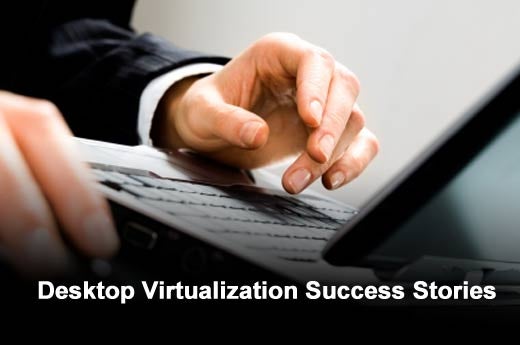The latest generation of HP ProLiant G7 servers combines intuitive, integrated technologies and easy-to-use software with AMD Opteron™ 6200 Series processors to help administrators optimize workloads, accelerate virtualization and process more data in less time.
This slideshow will explore the ways that HP ProLiant G7 servers change the economics of server purchasing decisions and explore how these servers can help businesses with some of the virtualization projects they will be considering in the near future.
Scroll through to see how HP ProLiant G7 servers can help businesses perform more efficiently.
For years IT managers making server purchasing decisions had to choose between cost efficiency and performance. IT managers could choose to scale out using commodity servers, which sacrifices performance, or to scale up by purchasing high-performance servers, which cost significantly more money.
Servers built on the AMD Opteron™ 6200 Series platform deliver performance that can help administrators meet the needs of their most demanding applications without breaking the bank.
Companies of all sizes are producing data in record numbers and the companies that are most adept and quick at managing, manipulating, analyzing and acting upon that information are able to achieve significant competitive advantage.
As part of this drive for competitive advantage, companies are also recognizing that they must be able to control database sprawl by using technology solutions — such as virtualization — to improve efficiencies in integrating and managing databases. By achieving efficiencies in their databases, organizations can be more agile at deploying applications that span across the business, such as customer relationship management (CRM) and enterprise resource planning (ERP), which are no longer just the realm of the large enterprise.
Reducing database sprawl through virtualization cannot only lead to improved operations and more business agility; it could also lead to lower licensing fees and lower energy consumption. In addition, one of the important goals for any IT organization is to reduce complexity, and this is where database sprawl presents a huge challenge. If there are many different databases, each one has to be accounted for, which makes it difficult for IT to ensure that data is accurate and up-to-date across the business. It also poses greater challenges and risks when deploying new business services and applications.
The popularity and ease of deployment of Microsoft SQL Server has led to the proliferation of SQL Server databases throughout many businesses. In some cases, departments have often been able to install and deploy their own databases without necessarily going through the normal controls of the IT organization. This type of approach is no longer tenable.
Organizations, large and small, need to be able to centrally manage their SQL Server environments to ensure that company-wide information is current and shared where needed throughout the organization. Reducing database sprawl is also essential to putting in place the processes to ensure that critical information is secure, properly backed up, fully compliant and available on time to those who need access to it and can act upon it, whether employees, managers, customers or partners.
IT managers who are evaluating virtualization as a means to consolidate SQL Server databases should also look at their hardware infrastructure and upgrade it where necessary. If the server infrastructure is more than three years old, it might be time to think about an upgrade or a refresh.
Servers powered by the AMD Opteron™ 6200 Series platform, such as the HP ProLiant G7 servers, feature a range of technologies that reduce power consumption, including Dual Dynamic Power Management, AMD CoolCore Technology, Enhanced AMD Power Now! Technology and more.
IT departments have now begun to extend virtualization beyond servers, out to the desktop because of the many benefits this technology offers. Desktops run as processes in the data center with the physical clients acting like a combination of display and input device.
Desktop virtualization helps eliminate some common challenges of desktop provisioning and support while improving overall company data management and security, streamlining system patches and upgrades, helping to achieve increased service availability, strengthening business continuity and decreasing total cost of desktop ownership.
Desktop virtualization helps optimize end-user applications by turning them into isolated executables controlled and run in the data center. It also increases management and control because it allows all administrative work to occur centrally, which reduces or eliminates redundant tasks, time and resources. Because all data resides in the data center in a virtual desktop environment, data security and continuity is improved. The end users’ experience in a virtual desktop environment is also vastly improved because users can access their same desktops on any device whether in their physical office or remote. This same flexibility helps control IT costs because there are more choices available for end-user devices.
Desktop virtualization is gaining acceptance across industries and company sizes, but there are specific examples that showcase the power of desktop virtualization to control costs and simplify management. Education school districts can use desktop virtualization to more cost-effectively deliver more access to computers for teachers and students.
In financial services, regulatory requirements on personal financial information make control vital. Large firms that have thousands of employees can find this level of control a challenge, so making administration easier with desktop virtualization is an enormous boon. The healthcare industry is also under stringent regulatory control regarding the privacy of patient data. Desktop virtualization also provides an easy way for clinicians to get access to technology that can provide the most efficient workflow and the highest quality of patient care.
HP ProLiant servers and server blades featuring AMD Opteron™ 6200 Series processors deliver industry-leading performance, with exceptional value and low total cost of ownership. This allows IT departments to build the backend infrastructure needed to streamline desktop management and control and deliver complete desktop environments with greater application compatibility. When combined with software like VMware View for desktop virtualization, this platform allows companies to increase the speed and reduce the cost and complexity of migration by delivering Microsoft Windows 7 as a virtual desktop.


